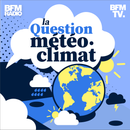Important information for allergic people. A new pollen index was presented this Wednesday, April 2, due to the closure of the National Aerobiological Surveillance (RNSA) network, which until now wrote risk allergy cards.
This association published its last newsletter on March 26, announcing its investment in mandatory liquidation. “For 30 years, we have informed him with rigor and passion about the presence of pollens in the air and the associated health risks, but without public subsidies, we are forced to put the key under the door,” explains the RNSA in place.
This liquidation, said President Nicolás aimed at AFP in mid -March, is a consequence of the non -return at the end of 2024 of the subsidy of 600,000 euros of the State, decided by the Ministry of Health and the ecological transition on the basis of an administrative inspection report.
A “poorly structured” device until then
This joint report of the General Inspection of Social Affairs (IGA) and the General Inspection of the Environment and Sustainable Development (IGEDD) judged the Polens Surveillance System in France “poorly structured”.
This inspection judged that this device rested “in a network of incomplete sensors, which is far from covering the entire national territory” and that “the network design method” seemed “random.” The report also pointed out an “opaque management of the RNSA” and “a wrong use of public financing”
He recommended to trust the monitoring of polenses to the approved air quality monitoring associations (AASQA), another network of associations federated by Atso France. This Wednesday, the AASQA launched, with Atmo France, the pollen index on the scale of the municipalities.
“The urgency was to continue informing the public about the polenses, especially that we are in the middle of the pollination season, so we really hope that this information is already satisfied with a first need,” said BFMTV Charlotte Lepitre, project manager and defense of Atmo France.
A new index
This index is calculated thanks to “statistical data, statements of polenses, meteorological forecasts and information of the European Copernicus platform, dedicated to the observation of the Earth,” explains Atmo France in its place.
“It is an indication that is different (from that of RNSA): we indicate the presence of policy in the air, not the allergic risk, because the allergic risk is quantified with health elevators. We give a track that is composed of quantitative data. At the moment, of course,” explains Charlotte Lepitre.
Its objective is to “inform citizens already health professionals on the levels of polvine in the air, to better anticipate allergic symptoms and treatments, with updated data on the scale of the municipalities, during the days of days and the next two days”, according to the site of Atmos France. The map allows to visualize the concentration levels of six species: aliso, birch, olive, artemis, pastures and ambrosia.
Atmo France “hopes to add certain taxa as he advances,” Cypress, for example, says Charlotte Lepitre.
This information allows allergic people to Polynses prepare for this exhibition. According to the Ministry of Health, in France, 30% of adults are affected by allergies to the policy. They manifest in sneezing crisis, a nose that is scratched, red eyes, that itchs or possibly a whistle or coughing. The Ministry of Health on which climate change has “an effect on certain policy: precocity to the beginning of pollination, increase in the amount of policy produced, proliferation of certain species from south to north …”
Source: BFM TV


